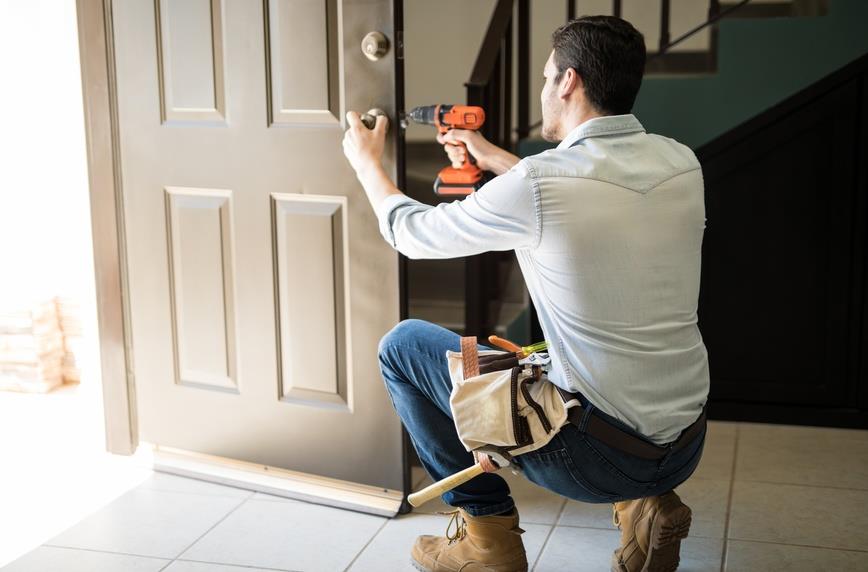Maybe your roof is a couple of decades old, and you’d rather replace it now instead of waiting for the inevitable. Maybe you’re trying to sell without an agent and you want your home to be at its best when it hits the market.
Or perhaps you’ve already listed your property online but see interest in it waning, and you know that being able to put “new roof” in the description will bring the buyers in. Whatever your reason for wanting a new roof, redoing your home’s roof isn’t just a matter of calling up a contractor and ordering a new roof.
There are a lot of choices that have to be made first. Do you want a full replacement, or just a “nail-over”? What kind of shingles do you want? What’s your budget?
Are you going to live in the house while the work is being done? Let’s look at some of the most important considerations when you’re thinking about getting a new roof.
How Urgent Is It?
Take a long, close look at your roof. Do you have leaks inside? Are there sagging or soft spots on the roof? Is there mold or moss growing on top of the roof, or the ceiling inside? Is the roof over 20 years old? If you answered yes to any of these questions, a new roof is necessary and probably a pretty urgent matter.
If you answer no to all of these questions, it’s not necessarily urgent but, depending on the age of the roof, still might be advisable. That leads to the next thing you should consider.
Should You Opt for a Nail-over Reroof or a Full Roof Replacement?
A full roof replacement is exactly what it sounds like. The old roof is completely torn off and a new one is built. Your contractor will tear everything off right down to the roof decking, which is made of wood planks or sheets that the actual roof will be fastened to.
If there’s any kind of damage or rot — and if you’re experiencing leaks, there almost certainly will be — your contractor will replace the decking with fresh wood.
Then they’ll install the underlayment and the shingles (or tiles, or shakes) on top of that. This is what people typically mean when they talk about a “new roof,” and it’s what experts recommend, especially if you have an older roof, or are planning on selling or installing heavy solar panels. A nail-over reroof, on the other hand, just involves the contractor nailing new asphalt shingles over the old shingles. It’ll look like a new roof, but the old roof is still there underneath — and so are any problems you might have had with the old roof.
The roofer also won’t be able to inspect the decking, so you won’t know if you have incipient rot or leaking there. Keep in mind that many cities and states ban putting new shingles over the old ones. A nail-over reroof is also faster and cheaper, for obvious reasons.
Although it’s almost always preferable to undergo a full roof replacement, there are certain circumstances where a quick nail-over reroof is acceptable, like if you only need to squeeze a little more time out of your existing roof, or if your budget is tight.
What Is Your Roof Budget?
Determine how much you can spend on your new roof remodel. A conventional roof replacement with standard asphalt shingles will cost between $10,000 and $20,000. If you opt for more expensive materials like upgraded shingles, metal, slate, copper, zinc tiles, or cedar shakes, that cost will go up significantly.
If your budget is a lot lower than $10,000, you might want to consider a nail-over reroof instead of a full replacement. On the other hand, if you’re staying in your home for a long time, and you have a big budget, premium materials like slate, copper, or cedar offer some very significant durability and aesthetic advantages.
What Are Roofers In Your Area Charging?
When it’s time to find a roofer, you’ll want to get multiple bids and do plenty of shopping around, just as you would if you were buying a new car or trying to find a real estate agent charging the lowest commission. You’ll be surprised how much the estimates differ; some will be unbelievably high, and some will be suspiciously low — but most will be in the middle.
That’s probably where you should focus your attention. Roofers who offer extremely low bids may be doing so because they’re using substandard materials or labor. It’s not a great idea to cut corners when it comes to something as important as the literal roof over your head. Even if you are trying to save as much money as possible, don’t let on, while you’re soliciting bids, that you’re looking for a low bid.
A contractor who wants your business may throw out an irresistible number, but keep in mind that you might end up with a low-quality roof. Keep a poker face when gathering bids, and evaluate them objectively. One solid way to find a roofer is to ask friends and family members if they have a trustworthy roofer who does good work.
Are You a Professional?
Requests for your services are coming in left and right. Let’s connect and grow your business, together.
-
More like this






